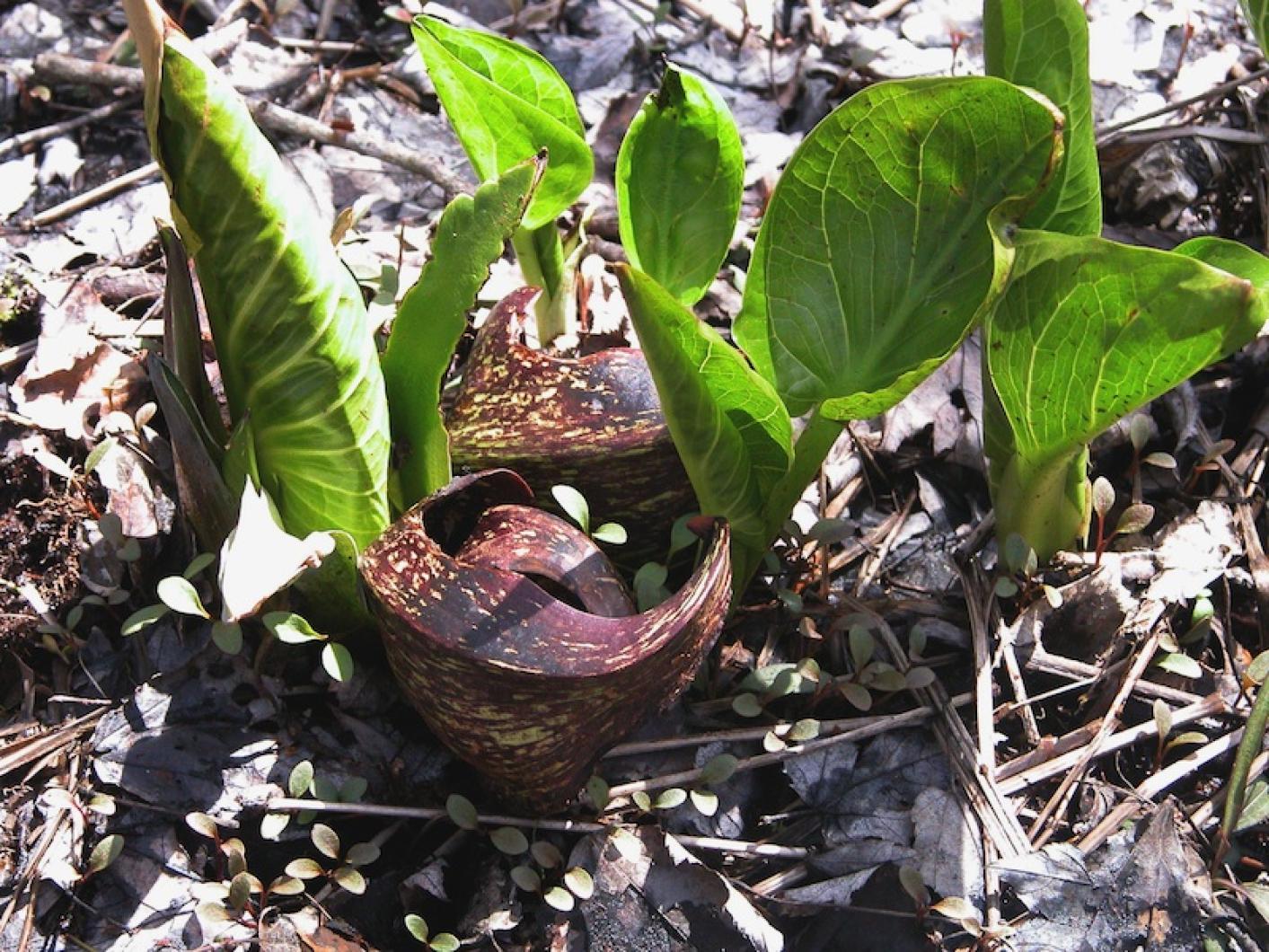Leave it to Henry David Thoreau to find stirring strength in putrid plants.
The celebrated naturalist knew of the greatness of the greens in the wetlands. In speaking of skunk cabbage, he shared its power as a pick-me-up, explaining:
“If you are afflicted with melancholy at this season, go to the swamp and see the brave spears of skunk-cabbage buds already advanced toward a new year. Their gravestones are not bespoken yet. Who shall be sexton to them? Is it the winter of their discontent? Do they seem to have lain down to die, despairing of skunk cabbagedom? ‘Up and at ‘em,’ ‘Give it to ‘em,’ ‘Excelsior,’ ‘Put it through,’— these are their mottoes.”
Great advice from skunk cabbages, which, by now, have greatly advanced beyond their buds, having coming out even before winter is laid to rest. Now is their time to shine, covering the wet woodlands with giant leaves. These leaves can be up to two feet long and one foot wide, and give the plant its name due to their size and pungent, skunk-like odor.
That musky smell is necessary, because it attracts insects such as flies and bees essential for its pollination. And those insects like it hot, especially during the winter cold, so skunk cabbage produces significant heat to attract them. Temperatures within the plant can be 27 to 63 degrees above air temperature, and can even melt snow in late winter and early spring when they bloom. Only a few other plants share this feat, called thermogenesis.
The land along the bridge on State Road, just up-Island from North Tisbury, showcases these potent plants, as do other wet woodlands. Look for them at Tea Lane Farm and Fulling Mill Brook Preserve, both in Chilmark, and at the stream running behind the Old Mill in West Tisbury.
You can ask for them by many other names, including swamp cabbage, clump foot cabbage, meadow cabbage, bear weed and pole cat weed. In other locales where bears roam, those beasts have been known to eat the bulbs and leaves. Regardless of their taste for this plant, this cabbage is not edible for humans since it produces a compound that will cause burning in the mouth and throat when consumed.
Even if you wanted to partake, skunk cabbage resists harvest. It has roots called rhizomes that become stronger as the plant ages. In fact, the roots are “contractible,” and will dig themselves deeper into the ground year after year, making it almost impossible to pull out the oldest ones.
Beyond their leafy greens, there is even more to love for hungry wildlife. Skunk cabbage provides food for wood ducks and bobwhite, both of which eat their seeds. The common yellowthroat will also use these lovely leaves, building their nests in their hollows.
Soon enough though, those leaves will be gone. They begin to decay in June, becoming slimy and black, essentially dissolving into the soils as summer comes into its own; the nutrients returning to the soil from which they came.
Before they go, enjoy their strange stank and unusual fruit, which remain after the leaves dissolve. Doing so, you’d be in good company, following in the footsteps of Thoreau, who could not seem to stop praising the enduring optimism that he felt to be represented by skunk cabbages: “It is good for me to be here, slumping in the mud, a trap covered with withered leaves. See those green cabbage buds lifting the dry leaves in that watery and muddy place. There is no can’t nor cant to them.... They see another summer ahead.”
Suzan Bellincampi is director of the Felix Neck Wildlife Sanctuary in Edgartown, and author of Martha’s Vineyard: A Field Guide to Island Nature.




Comments
Comment policy »